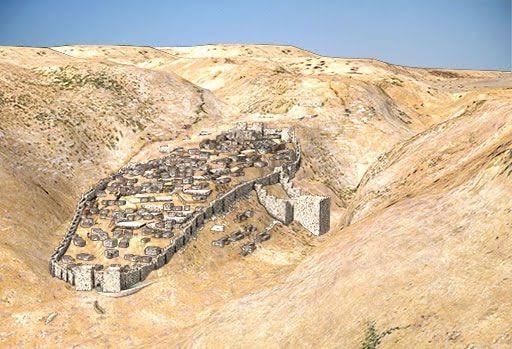The first picture is an artist’s impression of early Salem (where Melchizedek dwelt) which became Jebus and eventually the City of David and Jerusalem. The second is one I took recently from an approximately similar position.
There is an excellent time-lapse series at the City of David website which you can view here http://www.cityofdavid.org.il/en/virtual-tours/interactive-jerusalem-virtual-tour (although it incorrectly still places the temple on so-called Temple Mount).
What Abraham saw that morning was the site which was becoming known as HaMakom—The Place. In Abraham’s time, The Place comprised little more than a spring surrounded by a protective wall, above which a walled settlement was emerging. The description is used some four or five times in the Genesis 22 story and then in the patriarchal stories it features often. But the spring called Gihon was the central feature...a khast type spring whose name meant ‘gushing forth’ because of its abundant water and its force.
Here is what Rabbi Professor Yoel Elitzur says about HaMakom...
‘Ha-makom in Genesis
Once we understand the significance of “the place,” we can see that this keyword – ha-makom – is a keyword that is emphasized in the stories of the patriarchs in the book of Genesis as well. It appears in the story of the binding of Isaac and in Jacob’s Bethel narrative. The proof that the prominent role of the word ha-makom in these passages is no coincidence lies in the fact that often, the word is stressed in the Biblical text much more than what would be linguistically reasonable. That is to say, there are several instances in Genesis where the word ha-makom makes it difficult to understand the simple meaning of the verse’ (end quote).
Imagine Abraham’s feelings as he lifted up his eyes and saw where God was taking him—and the destination where he was to offer his son! Would he turn back from here...or go on into what he knew God was calling him to?
He concluded, says the writer of Hebrews 11, ‘that God was able to raise him (Isaac) up, even from the dead, from which he also received him in a figurative sense.’
This vantage point can represent for us, those same moments God brings us to when we must commit to His absolute sovereignty, or return and miss the enlargement that surrender always brings!


 RSS Feed
RSS Feed
